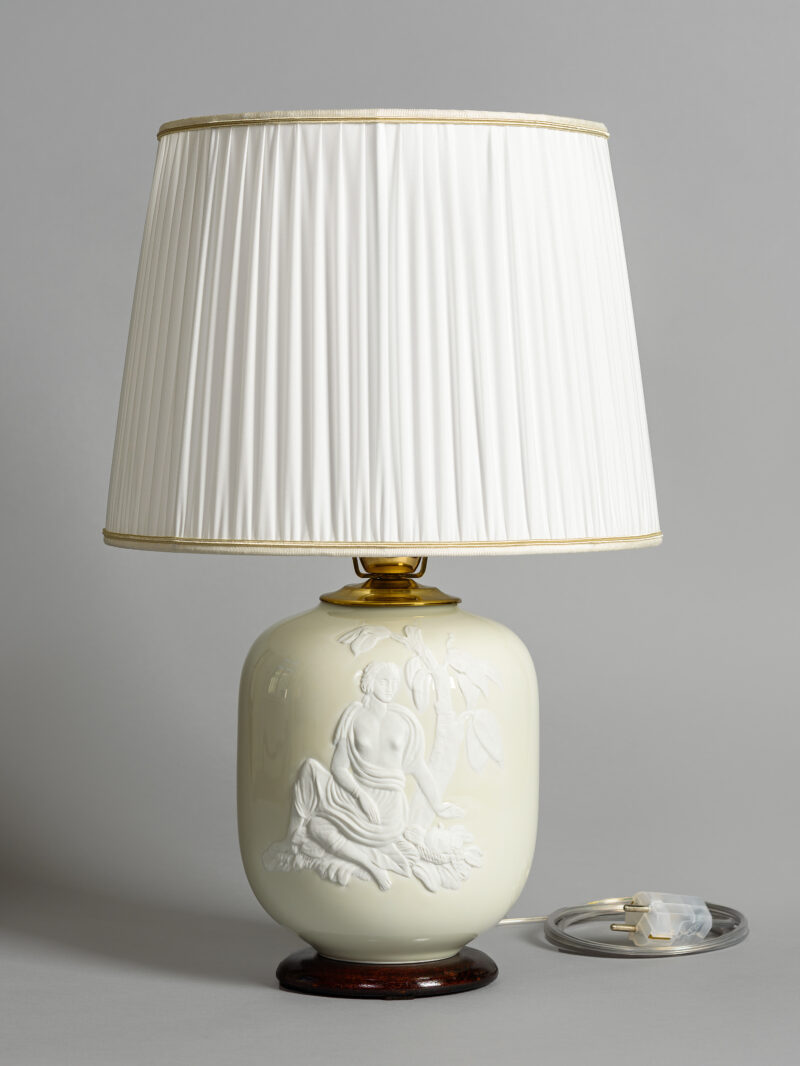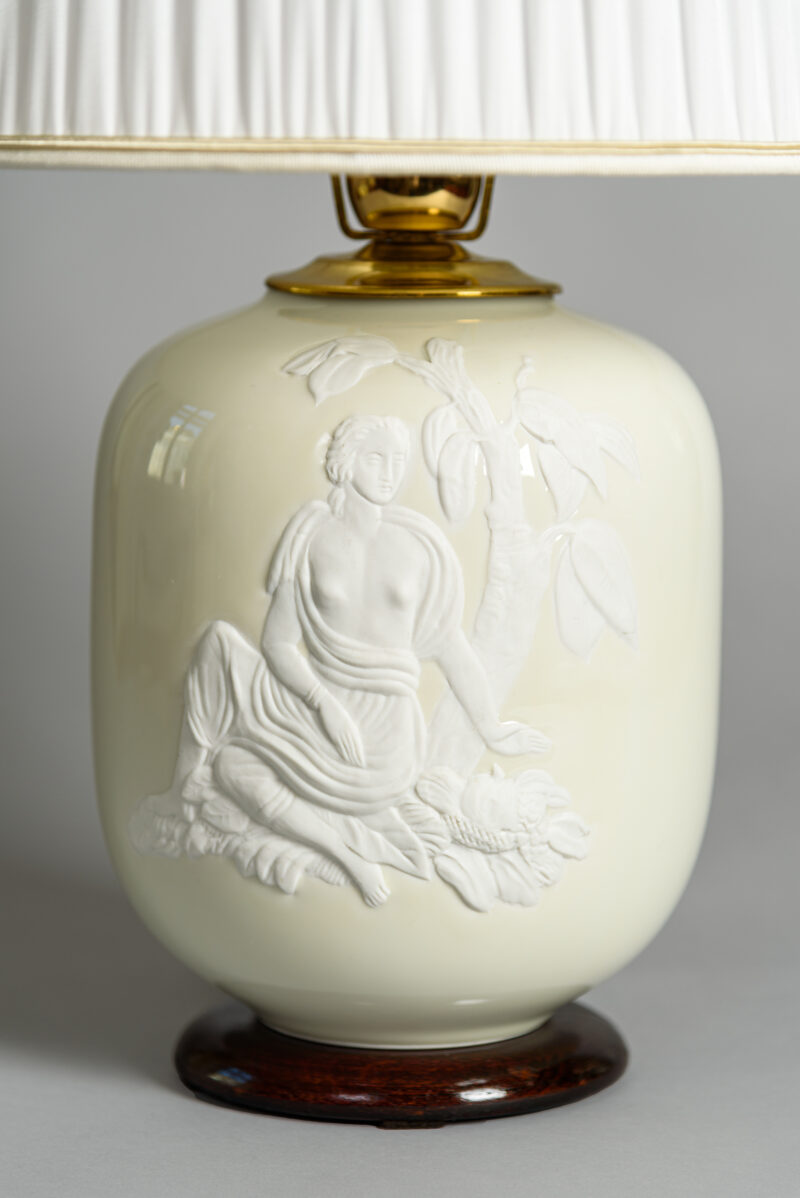
Exceptional Porcelain Table Lamp from the Augarten Porcelain Manufactory, Vienna
The 1‑light porcelain lamp, raised from a flat wooden base, is glazed in a light beige tone, showcasing a female figure in biscuit porcelain, with uncovered upper body sitting under a palm tree, surrounded by leaves and fruit. The design perfectly reflects the Art Deco era.
Newly fitted with a hand-made white silk shade in the tradition of the Augarten Vienna shades, with a soft-golden soutache. It is a truly beautiful, delicately elaborated Table Lamp in the style of the Art Deco, almost reminding of Paul Gauguin’s aesthetics.
The beginnings of the Viennese porcelain manufactory go back to the 18th century. It was the Dutch war agent at the court of Charles IV, Claudius Innocentius du Paquier, who brought the closely guarded secret of porcelain production from Meissen to Vienna in 1717. For this he received from Emperor Charles VI. a special privilege. He exclusively was allowed to produce porcelain in the Austrian monarchy. In 1718 he founded the second oldest porcelain manufactory in Europe in the area oftoday’s Porzellangasse in Vienna.
In 1864, the rapid flourishing of foreign porcelain manufactories led to the closure of the most important porcelain manufactory in the Habsburg Empire. Exactly 60 years later, in 1923, the Viennese Porcelain Manufactory Augarten was reopened in the Augarten Palace and the production of porcelain continued in the imperial tradition. The Vienna Augarten is one of the oldest baroque parks in Vienna. The parc created by Joseph II was always intended as a place of entertainment for all citizens.
The baroque garden was a place of cultural encounters, where, for example, the famous morning concerts took place with the participation of W. A.Mozart. Beethoven also played his Kreutzer Sonata here in front of an audience for the first time in 1803. From the reopening in 1923, many designs by contemporary artists such as Josef Hoffmann, Michael Powolny, Franz von Zülow, Ena Rottenberg and other representatives of the “Wiener Werkstätte” were realized. The manufactory reached a new high point in its history with Viennese Art Deco.
Ena Rottenberg (1893 – 1952) trained at the Vienna School of Applied Arts with Michael Powolny, among others, and is one of the most important artists whose designs were implemented with great success in the first decades of the Augarten porcelain manufactory. The influence of the Wiener Werkstätte, to which Ena Rottenberg belonged, clearly shows in her work. Her design language was always graceful and delicate. Chinoiserie, mythological or fairytale depictions in the style of Art Deco can be found in many of her works. She enabled the manufactory to bridge the gap between tradition and modernity in the 20th century.
Website Augarten Porcelain Museum Vienna: https://www.augarten.com/en/po…

